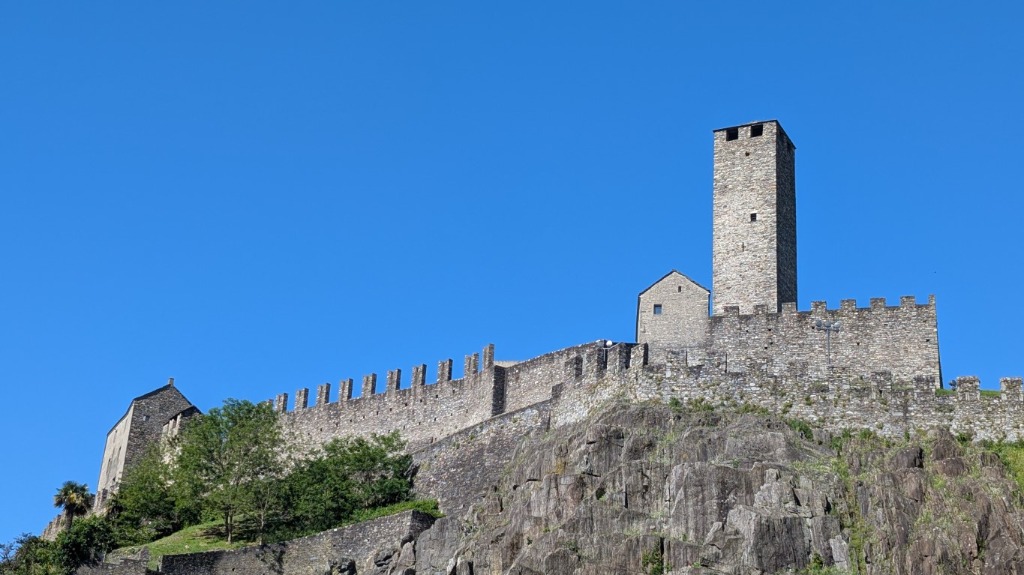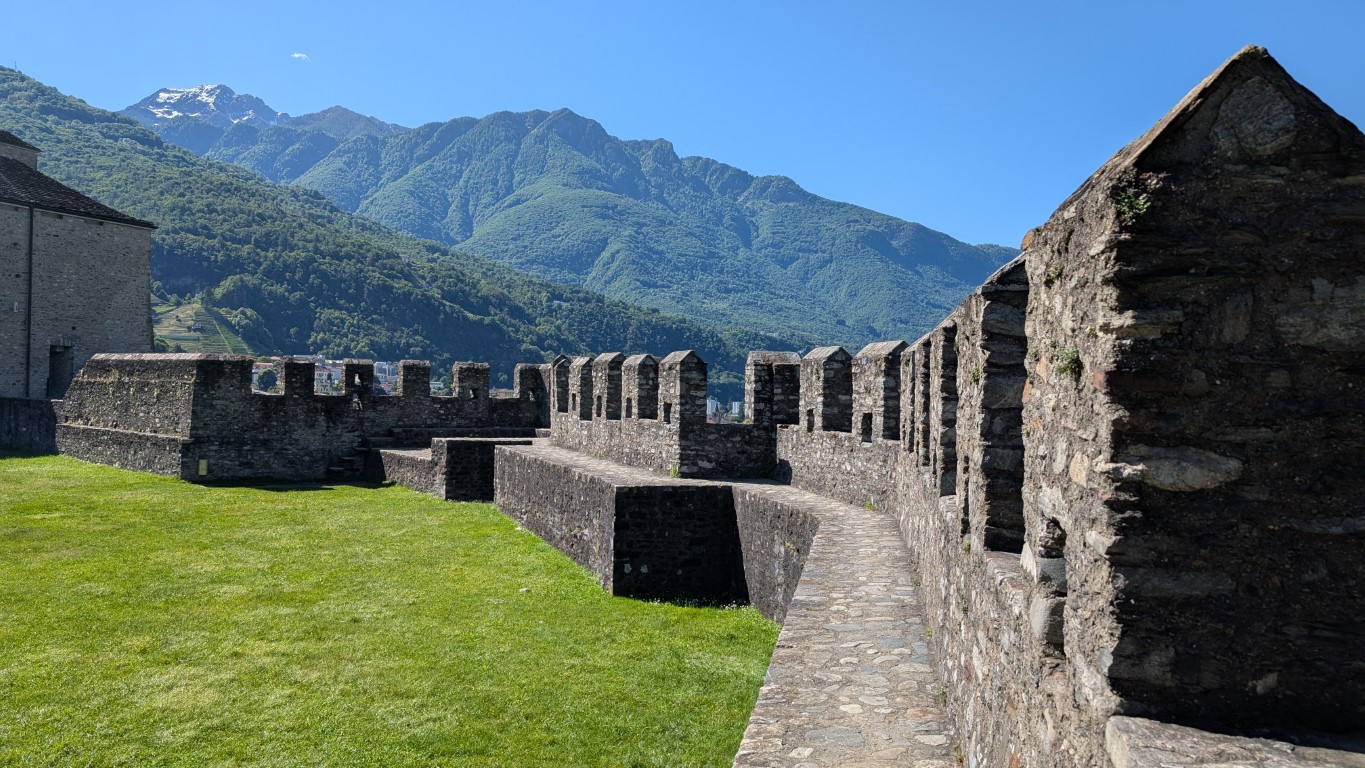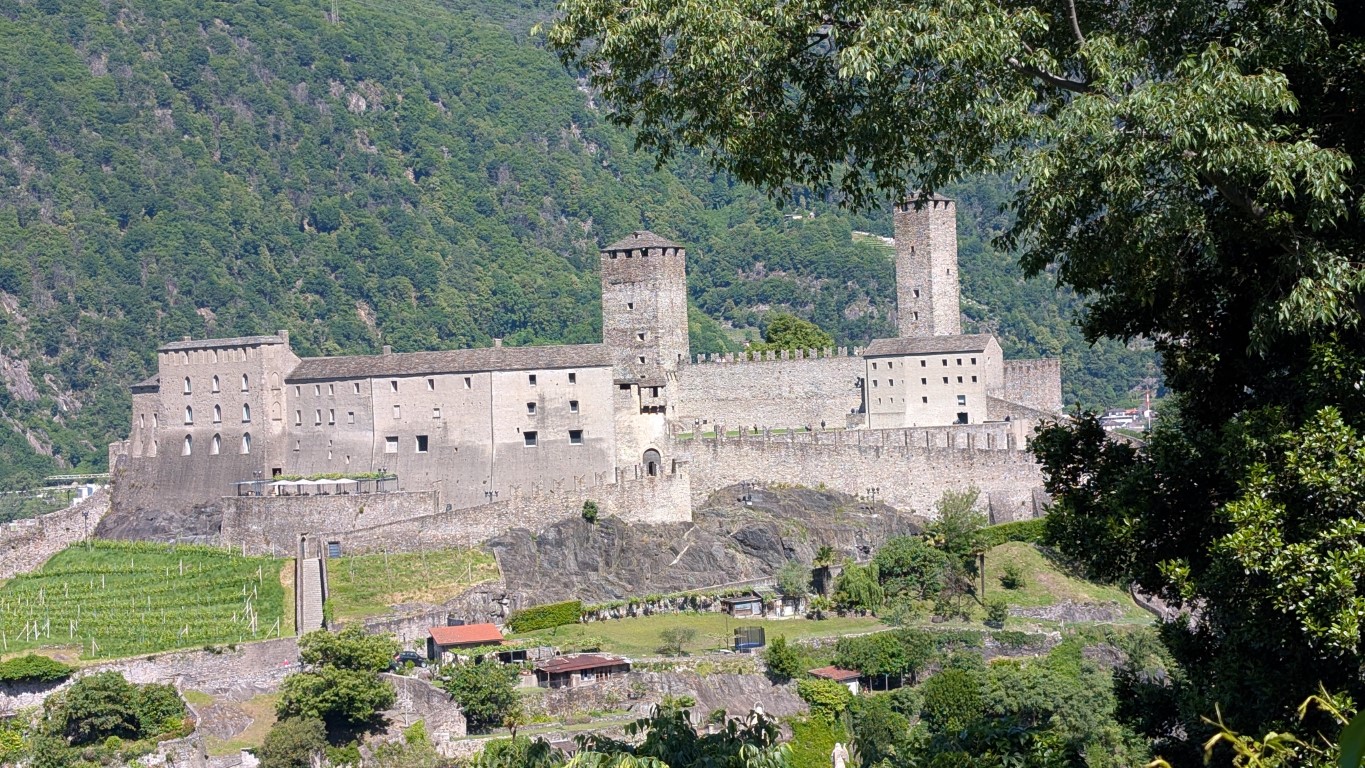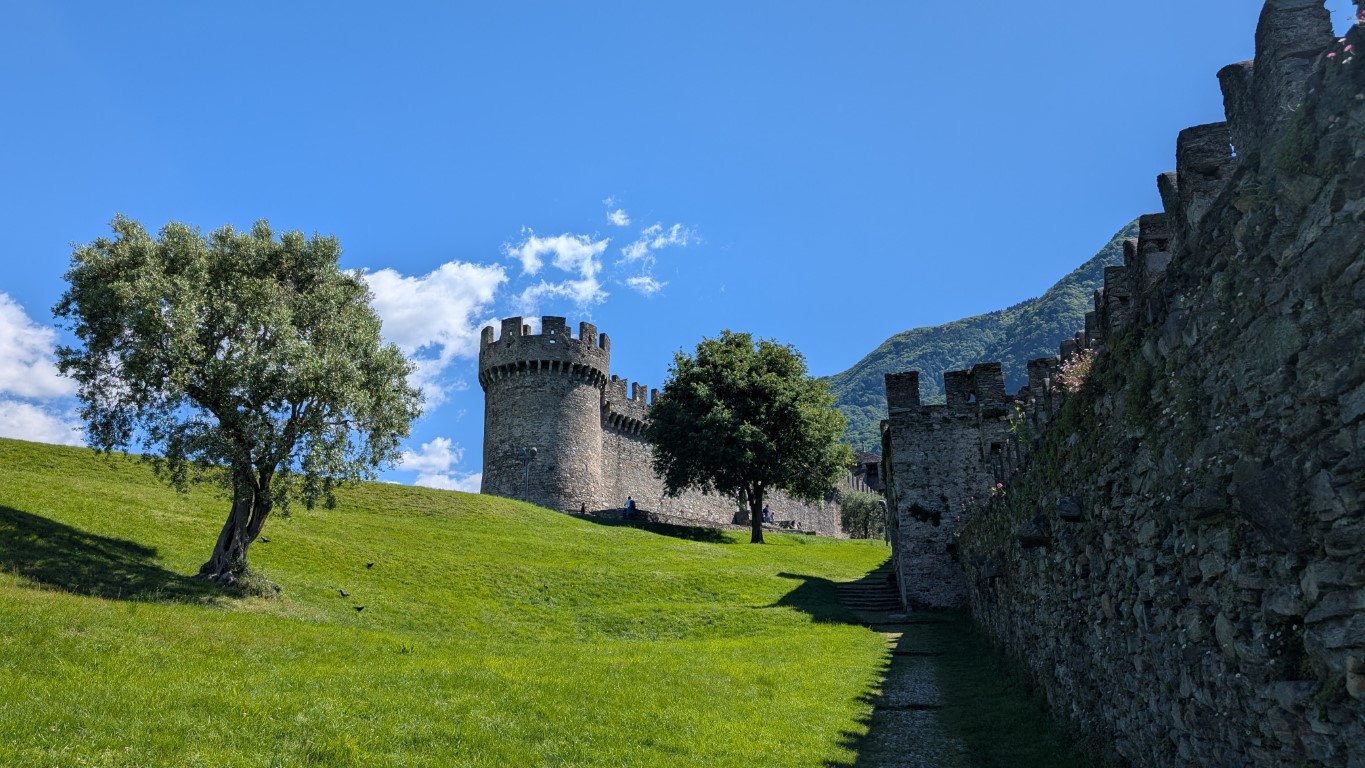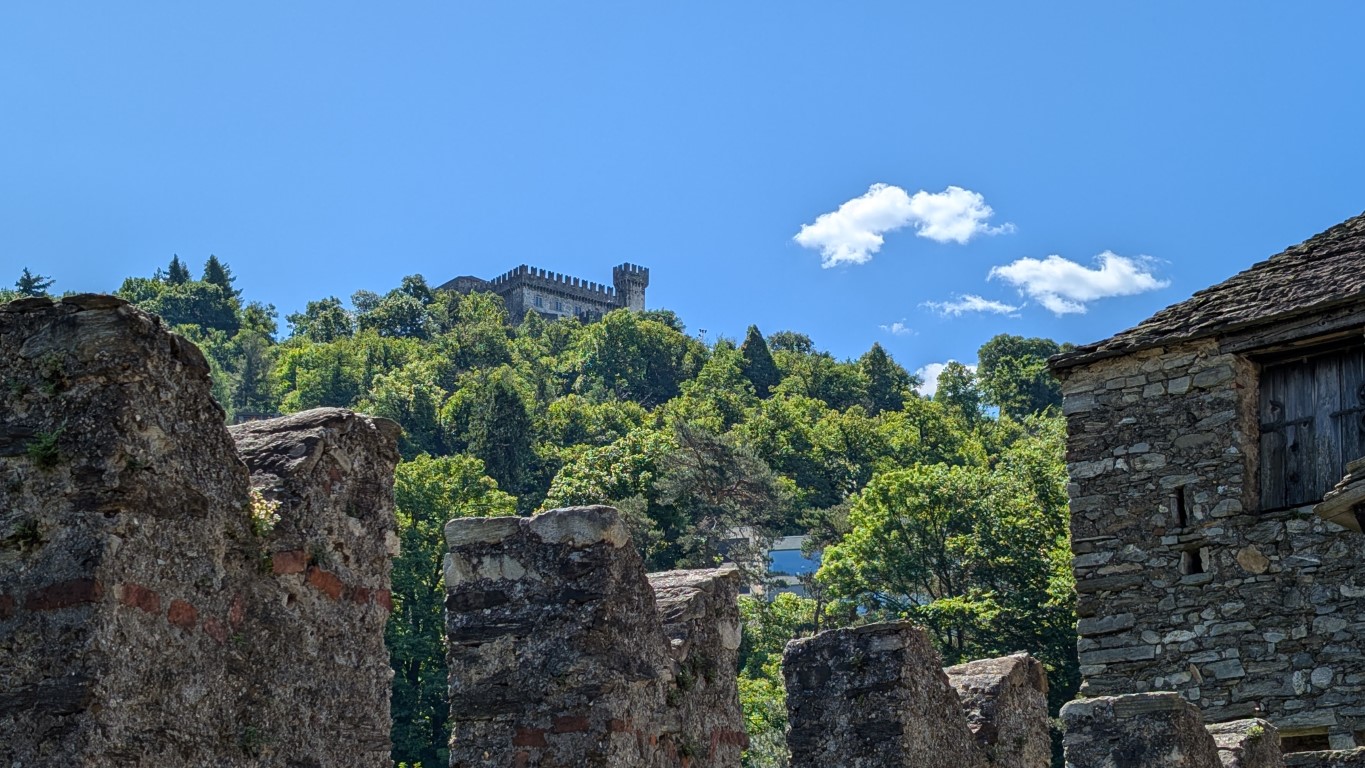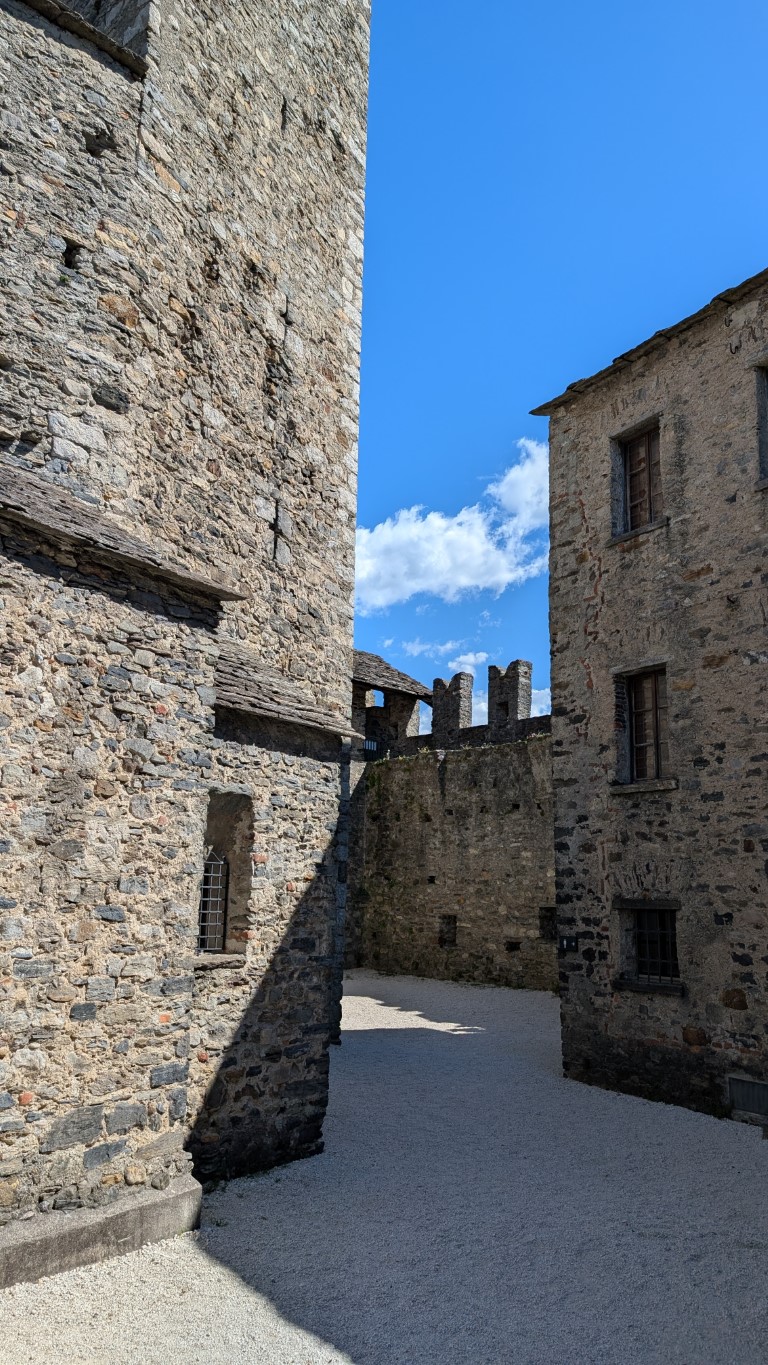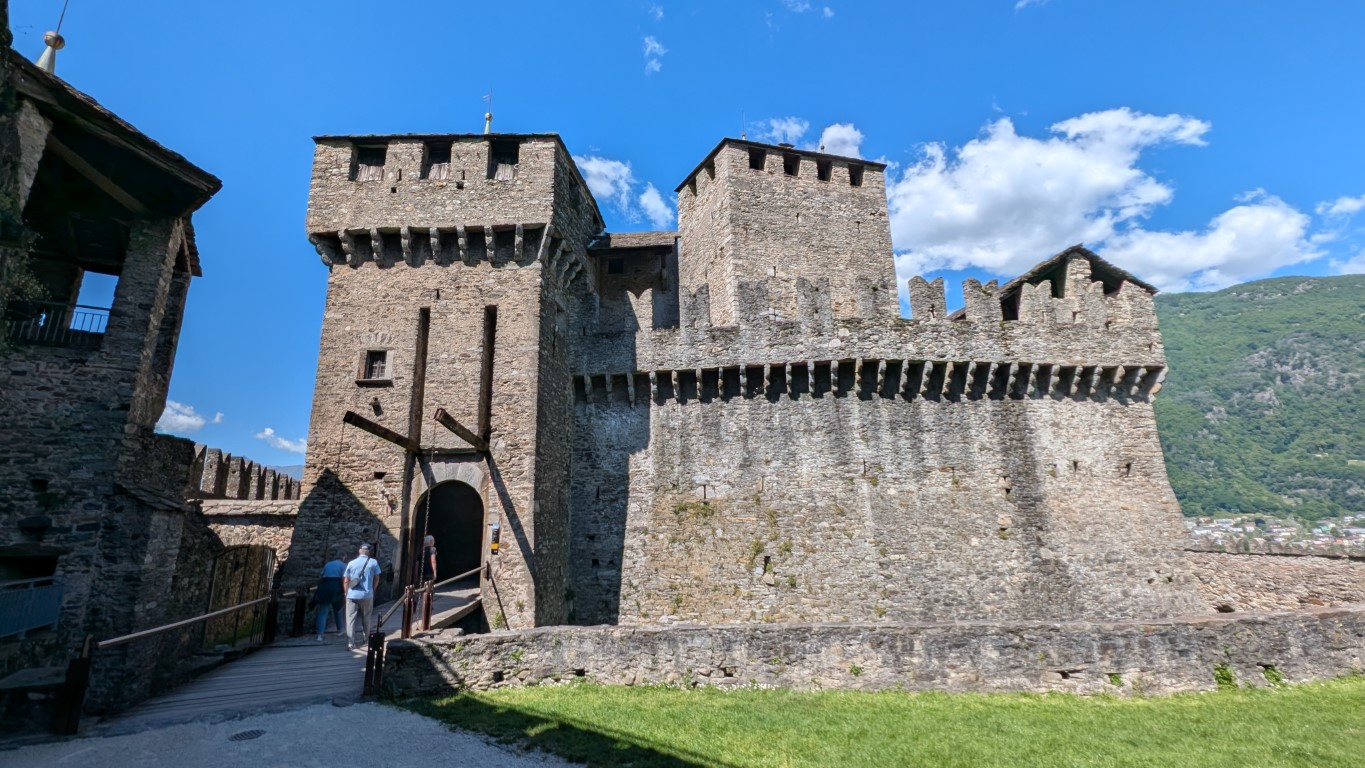Like a stone dreamkeeper, it towers above: the fortress of Bellinzona – one of the most impressive and best-preserved late medieval fortifications in Europe. Its three castles – Castelgrande, Castello di Montebello, and Castello di Sasso Corbaro – are perched on rocky outcrops, surrounded by the emerald-green backdrop of the Ticino valley, which lies like a polished emerald between the Alpine passes. Since 2000, this stone monument of collective memory has been a UNESCO World Heritage Site. But it's not just the monumental sight that fascinates – it's also the history that reverberates within its walls like the echo of a bygone era.
A key to Italy
Bellinzona lies at a location that has been crucial to the fate of entire empires: Here, where the Gotthard, San Bernardino, Lucomagno, and Nufenen passes intersect, the Alps narrow to a bottleneck. Only two narrow passages lead through this narrow valley, dominated by a bastion of three interlocking castles. It's no wonder, then, that the Milanese commissioner Azzo Visconti wrote in 1475: "Questa terra è pur una giave e porta de Italia" – "This place is the key and gateway to Italy."
A place that breathes history
The first traces of human activity date back to the 4th millennium BC. The Romans built a fort here to secure their newly conquered access to the Alps. From the early Middle Ages onward, Castelgrande became a political pawn of successive empires—from the Ostrogoths and Byzantines to the Lombards and Franks. Each era added another layer to the castle, like a stone book written over the centuries.
With the rise of the Gotthard Pass in the 13th century, a bitter struggle for supremacy in Bellinzona erupted: Milan, Como, the Barons of Sax, and finally the Swiss Confederation all left their mark. In the 15th century, a defensive structure emerged that was so solid that it even survived the storms of the Italian Wars.
The Three Castles – Watchtowers of History
Castelgrande, the oldest and most powerful of the three bastions, rises directly above the old town. Its two massive towers—the bright Torre Bianco and the dark Torre Nera—seem to stand guard over time like twins. Today, the sprawling grounds house a museum, but once it was the nerve center of military power.
A little further east lies Castello di Montebello, once called the "little castle," but it certainly doesn't lack self-confidence. Built on a leaning rhombus, it was protected by deep moats. Its interior now houses the municipal museum, featuring archaeological treasures from the region—like the quiet voice of a bygone Bellinzona.
Perched high above everything, the Castello di Sasso Corbaro stands alone on a rocky outcrop, like a solitary sentinel over the valley. Built in just four years, it stands as a monument to haste, but also to determination. The Baroque hall inside lends the austere walls an almost courtly elegance.
Murata – the stone band
No less impressive is the Murata, a double city wall with battlements and battlements, which ran through the valley like a stone ribbon. In its heyday, it was more than just a wall – it was an extension of the castles, a controlling arm over the valley. A flood in 1515 destroyed parts of it, but its silhouette lives on in city plans to this day.
Decay and rebirth
With the transfer to the Swiss Confederation in the 16th century, the fortress lost its strategic value. Its walls were no longer feared, but forgotten. Only in the 20th century did a long phase of rediscovery and restoration begin – a return to its architectural and historical grandeur. Today, the walls no longer tell of war, but of cultural heritage – and of the triumph of time over oblivion.
A living monument
The fortress of Bellinzona is no longer a silent witness, but a living place of wonder, learning, and dreams. It is history set in stone, embedded in a landscape of timeless beauty. Those who take a walk here among the towers and battlements traverse not only space—but also centuries.


